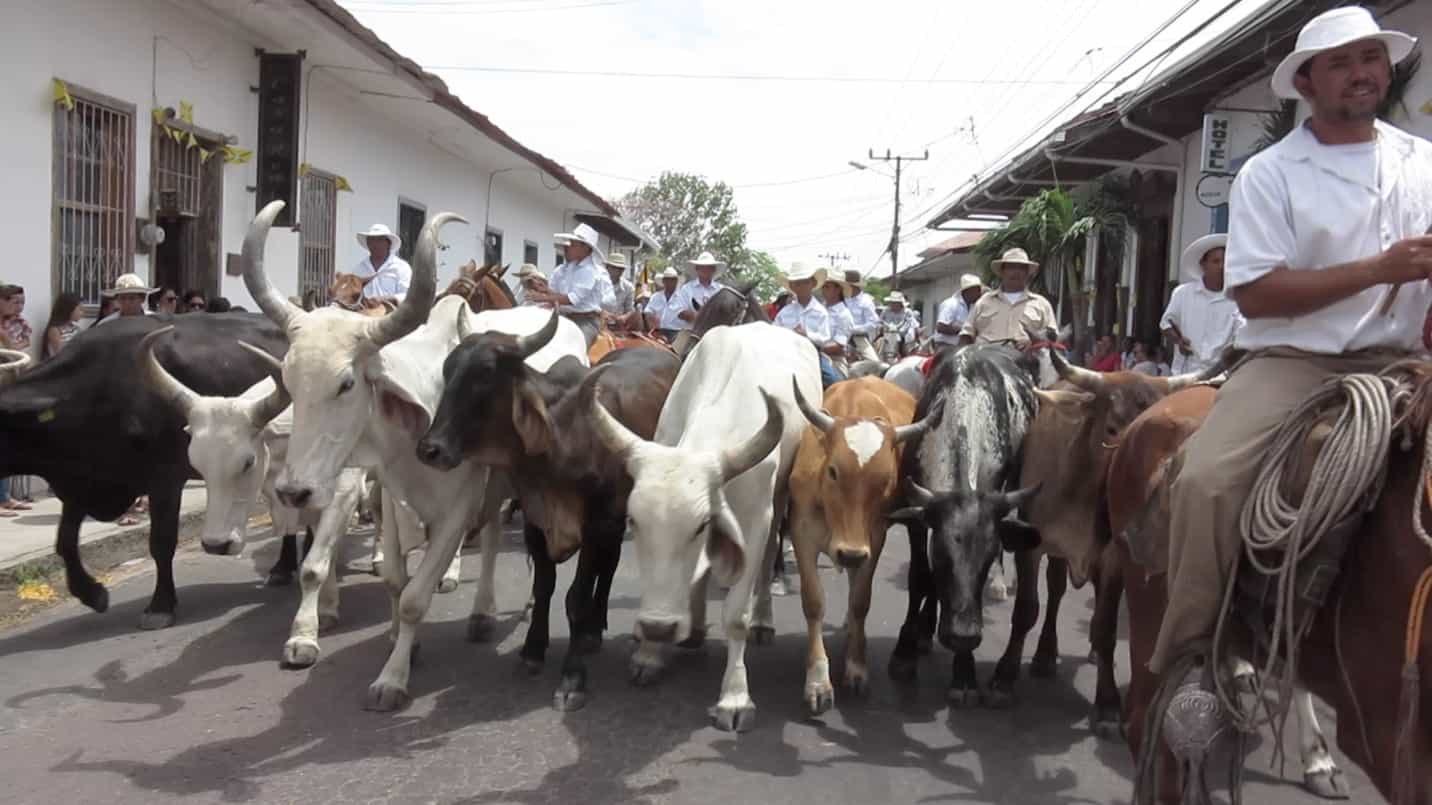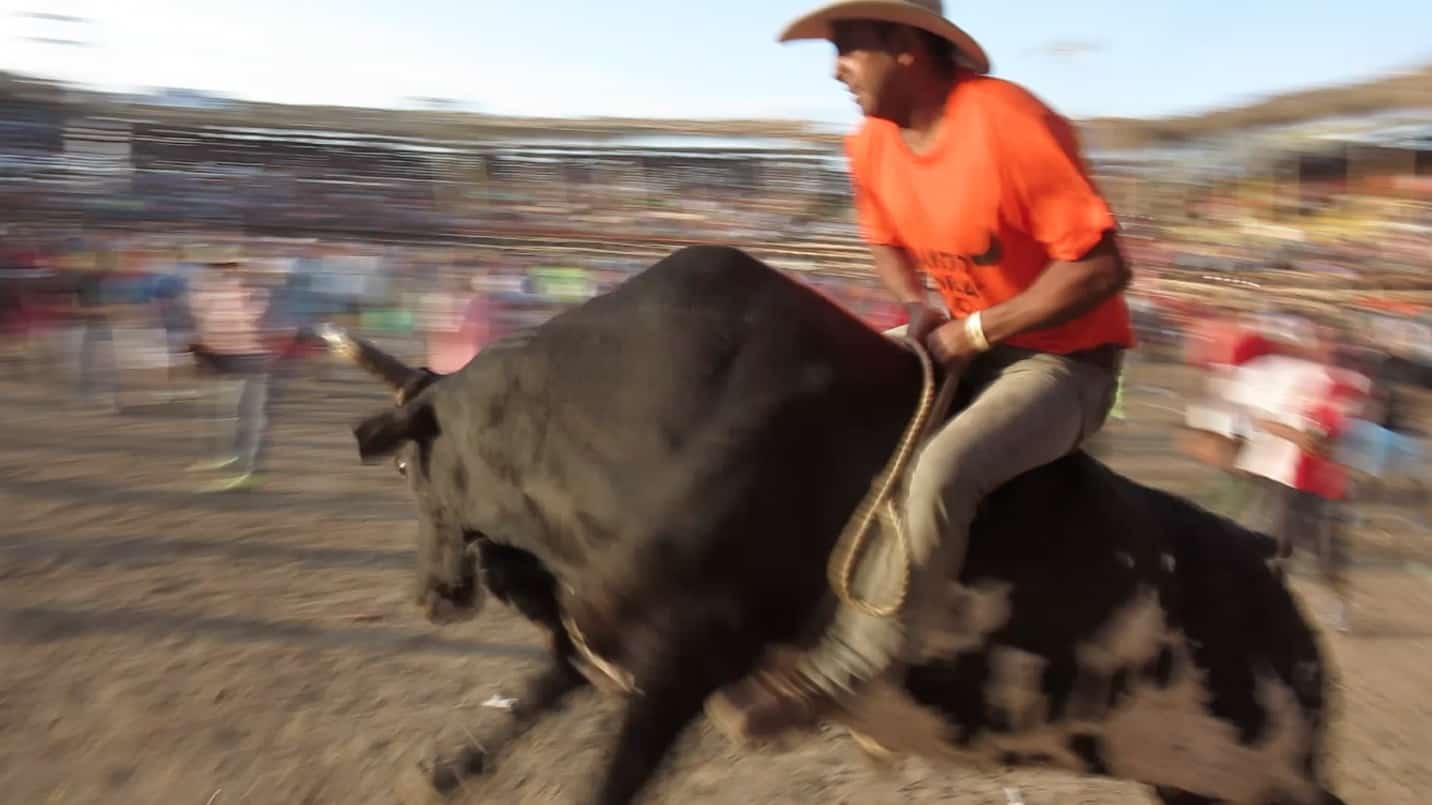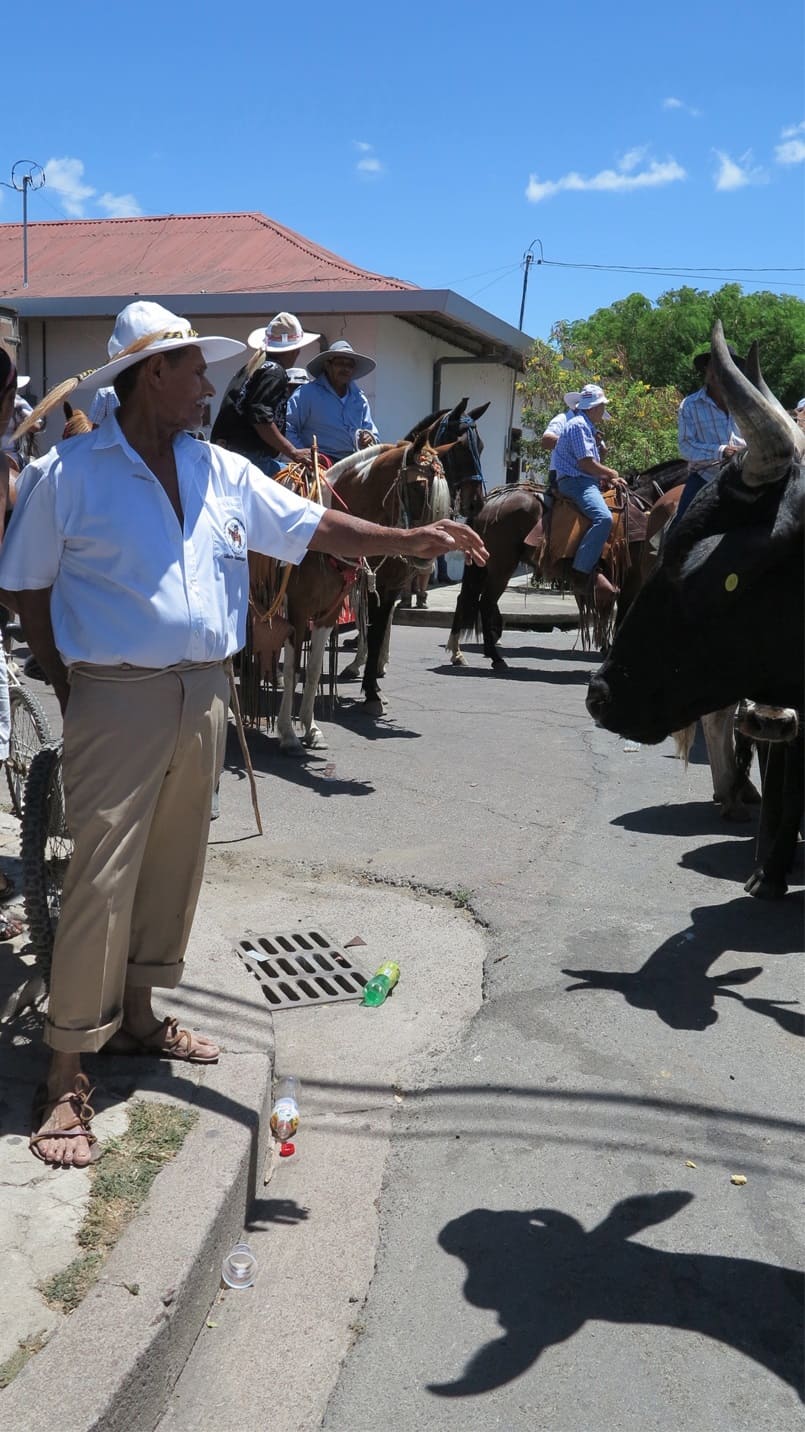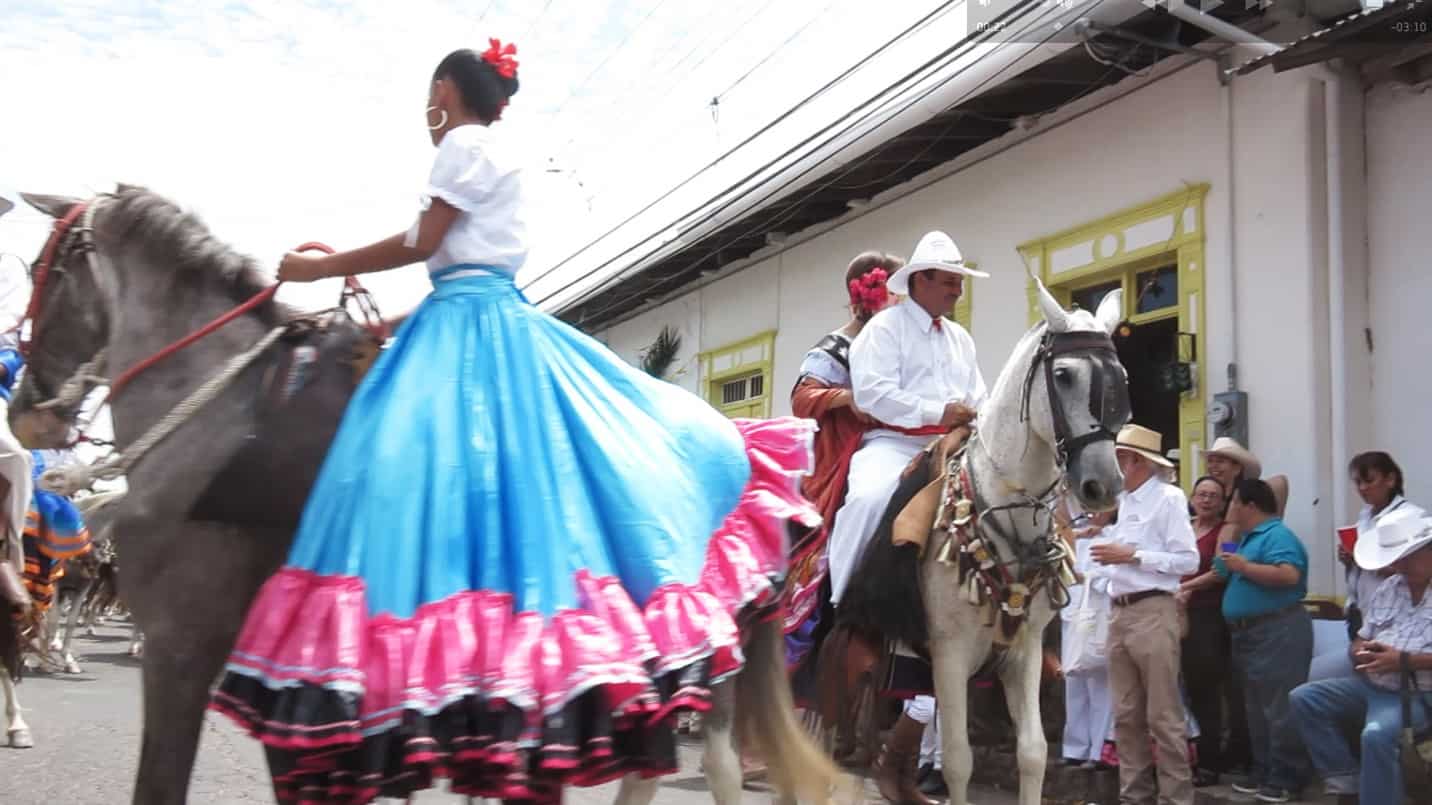LIBERIA, Guanacaste — José Luis Villareal knows a thing or two about bulls.
His grandfather raised them outside their house in Liberia, and his father became a boyero, the name for the drivers of bulls pulling traditional, colorful oxcarts that pepper Costa Rica. When his father retired, Villareal, better known in Liberia as “Güicho Pizarro,” took over the oxcart, having apprenticed the job since he was 12.
Now, at 68, Pizarro has another bullish responsibility: He is the person who supplies the bulls that walk through Liberia escorted by horse-riding cowboys and sabaneros each day of the Civic Fiestas that are currently taking place in that town. This is called a tope and is a big part of the ongoing Liberia celebrations, which will continue through Sunday.
The story of Liberia, the bulls, the fiesta, and Güicho are intertwined. To understand it all, we need to go back over 250 years when this part of Guanacaste was only five big haciendas, each individually owned. At the time, the area was part of Nicaragua, and people from all over the North would congregate under the big Guanacaste tree in the center of town with their cavalry: bulls and horses for trading. They met people from San José or Bagaces at the negotiating spot. In this way, the first roads to Liberia were built in what was then called El Poblado de Guanacaste.

ñ
The area went through a plethora of name changes: Villa de Guanacaste five years after the province seceded from Nicaragua, Ciudad de Guanacaste later, and ultimately, Ciudad de Liberia, the provincial capital.
The bulls? Yes, back to the bulls. Back in the beginning, the developing zone of commerce was surrounded by five gates leading to the haciendas, with wild bulls kept outside.
“One week a year the owners of the haciendas would have this party, and all their sabaneros would come and ride the wildest bulls,” explained Mario Avedaño, a Liberia native who has spent the last three years making a documentary on the history of this tope. “The ladies made food and everyone dressed up. It was the first fiesta in Guanacaste. The whole town came to Calle Real to see the sabaneros meet the bulls.
“Tope means ‘to meet,’” Avendaño said. “Now, the fiestas around the country call anything with horses a tope. But the government declared this event in Liberia to be part of our cultural heritage, meaning you can’t change it.”
It’s an understatement to say that this local culture is centered around bulls and horse riding. Bull riders are rock stars, with local kids clamoring at their heels as they gather with the sabaneros and cowboys to escort Pizarro’s bulls.
Avendaño noted the difference between sabaneros and cowboys. It’s in the clothes, those on the men and women, and those on the horses. You can spot the sabanero by his white shirt, khaki pants, boots and a soft hat. Their horses are well-decorated in layers starting with a fine, handcrafted leather saddle with carved designs, then another layer of suede with the tassels used to motivate the horse. This is all topped with a very detailed cover, usually quilted and decorated with horse hair and more carved designs and woven leather.
Cowboys have their own costume as well: a shirt of any color (although you’ll spot a lot of plaid) tucked into jeans with a belt, cowboy boots and a traditional cowboy hat.
“Cowboys sit on top on a horse chair,” said Avendaño, about what looks a lot like an abbreviated Western saddle.
Güicho doesn’t ride a horse when he’s doing his job leading the bulls in the tope, a job he relishes. He was beside himself with excitement when he got the call 17 years ago from the organizers of the Fiesta Cívica, the Asociación para la Cultura de Liberia. You could say he took the bull by the horns.
After all, he was eager to help the community, as he was born in Condega, one of the original neighborhoods where houses are preserved in their old, white colonial style.
“I remember the real bulls when I was seven,” he said. “All my life I wanted to be part of this. I got a little scared because I thought I wouldn’t be able to do it. But after the first year, I was able to feel like an important part of the legacy. I am helping our community to preserve our identity.”
Avendaño said that Pizarro is “one of the main folkloric symbols of Liberia. All generations look at him as a symbol.”
These tope bulls, 10 in all, are not the bucking showstoppers that will eventually be ridden in the ring during the fiesta itself. These walking the street among the people and horses are castrated, domesticated bulls, and Pizarro has never had a problem with any strays or accidents. The bulls begin their trek promptly at 12 p.m. each day of the fiesta, and they don’t seem the least bit bothered by all the horses and their riders, nor the cheering crowds.
So, how has the fiesta evolved in all the years that Güicho has been leading his charges throughout Liberia?
“Well, the food, the amount of bulls ridden,” he replied. “The bulls in the ring used to be even more wild, but now they are used to people. They still use spurs on them like they did in the beginning.”

Not to be one to be left out, Güicho even rode a bull into the ring once. Of course, everybody applauded him, but he didn’t like it and has never returned to that venue. Perhaps he did not like the taunting of his favorite animals. After all, kids grow up watching the bulls walk the street, and those that buck in the ring; eventually, according to Avendeño, they start teasing the bulls.
Lest one think the taunts are cruel, he countered: “There are regulations so that you don’t hurt the bulls. We keep the tradition, which is not to hurt the bulls. The bulls are used to people.”
This weekend, on any given day, there will be about 1,000 horses and riders in the tope. Güicho will be leading the bulls, and he said he’ll keep doing it every year until the committee stops calling or God won’t let him continue.
After all, he concluded, “The bulls are like I am with my wife, but they understand me more and they don’t get mad or jealous.”
For more of Güicho’s daily work as an oxcart driver, check out this fascinating feature from La Voz de Guanacaste.


